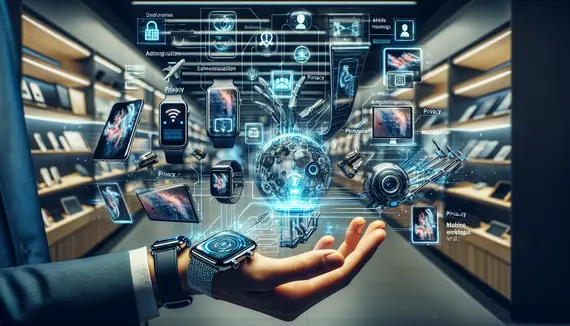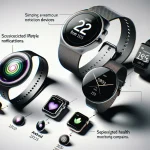
Unveiling Apple's Strategy in AI Model Training
The innovation powerhouse that brought us the iPhone is making fascinating advancements in artificial intelligence. Apple, known for its secretive yet trailblazing approach, has shared insights into how it's training its latest AI models. This is no ordinary update; it's a glimpse into how one of the world’s leading tech companies is shaping the AI landscape.
Apple’s progress in AI development is driven by a combination of sophisticated technology and insightful strategy. Whether you’re a tech enthusiast or a casual observer, understanding Apple's latest AI developments can provide valuable insights into the future of technology and, more specifically, how AI is becoming more integrated into our daily lives.
Harnessing the Power of Data
The foundation of any AI system is data, and Apple is no exception. Apple is leveraging vast amounts of data to enhance the performance of its AI models. This isn’t just about quantity but also the quality of data being utilized. By ensuring that the data is diverse and representative, Apple is striving to eliminate biases that can lead to inaccurate outcomes.
The tech giant is quite selective about their data sources and input methodologies. Collecting data from real-world scenarios plays a crucial role in making models more adaptable to dynamic situations encountered by users. Apple is focusing on achieving a balance between privacy and data usability, resonating with its staunch belief in user privacy and ethics.
Secure and Private AI
One of the key features that sets Apple apart is its commitment to privacy, even in AI training. The company employs privacy-preserving techniques like differential privacy, which allows for the analysis and collection of useful data patterns without compromising individual user data. This means Apple can gain insights needed to improve its AI capabilities without ever peeking into a user's private information.
In practical terms, this makes AI more trustworthy for users who are increasingly concerned about privacy. Apple's dedication to privacy means users can rely on their ecosystem without fearing that their personal information is at risk. This approach helps build trust in their AI systems, ensuring a more seamless integration into users' everyday routines.
Integration Across Apple Ecosystems
A unique aspect of Apple's AI model training is its application across the Apple ecosystem. From iPhones to Macs and even wearable devices like the Apple Watch, AI is becoming an integrated aspect of their devices. Features like Siri, predictive text, and even photography enhancements are constantly evolving, thanks to ongoing AI improvements.
The integration of AI is not merely about adding cool new features—it’s about creating a cohesive ecosystem where each device enhances the others through smart functionalities. Your Mac learns from your iPhone, and your Apple Watch adapts based on your interactions, offering a more personalized user experience.
Continuous Learning and Adaptation
Tech doesn’t stand still, and neither does Apple. Continuous learning is crucial in AI development to keep up with the fast-paced tech world. Apple's AI models are designed not only to perform effectively from the start but also to adapt and improve over time. This means that as more data is inputted and processed, these models learn and refine their outputs for better performance.
This continuous learning framework involves regular updates and iterative improvements, ensuring that devices always deliver peak performance. The Apple environment thrives on this evolution, as user feedback loops play an integral role in shaping and fine-tuning AI models.
Collaborative Efforts in AI Development
A noteworthy element of Apple's approach is its collaboration with various experts and institutions. Apple is not working in isolation; the company is engaging with academic institutions, researchers, and even other industries to enhance its AI models. This collaboration brings diverse perspectives and expertise, driving more comprehensive AI solutions.
Such interactions enrich AI models by exposing them to a plethora of real-world challenges and scenarios. This diversity in problem-solving contributes greatly to more robust and versatile AI technologies that benefit end-users with more precise and intelligent toolsets.
Conclusion: A Future Driven by Intelligent Machines
Apple's advancements in AI model training are not just about staying ahead in the tech race. They reflect a deeper commitment to crafting technologies that are safer, more private, and seamlessly integrated into their ecosystem. By prioritizing privacy, embracing data responsibly, and fostering continuous learning, Apple is setting new standards in the tech industry, where AI does not come at the expense of users' trust and security.
Looking ahead, it’s exciting to envision how these AI innovations will evolve and impact our everyday lives. As Apple continues to break barriers in AI development, the benefits will ripple across its ecosystems, empowering users and enhancing their digital experiences. Whether you own a single Apple device or an entire suite, the future heralded by these intelligent machines promises to be nothing short of revolutionary.









